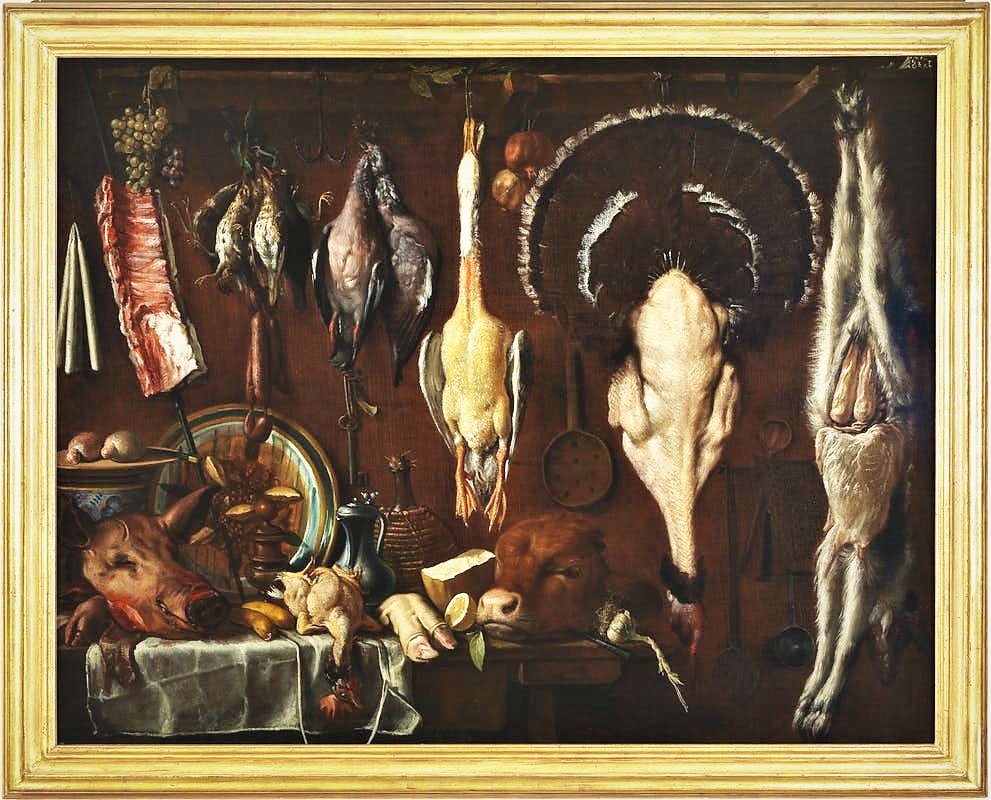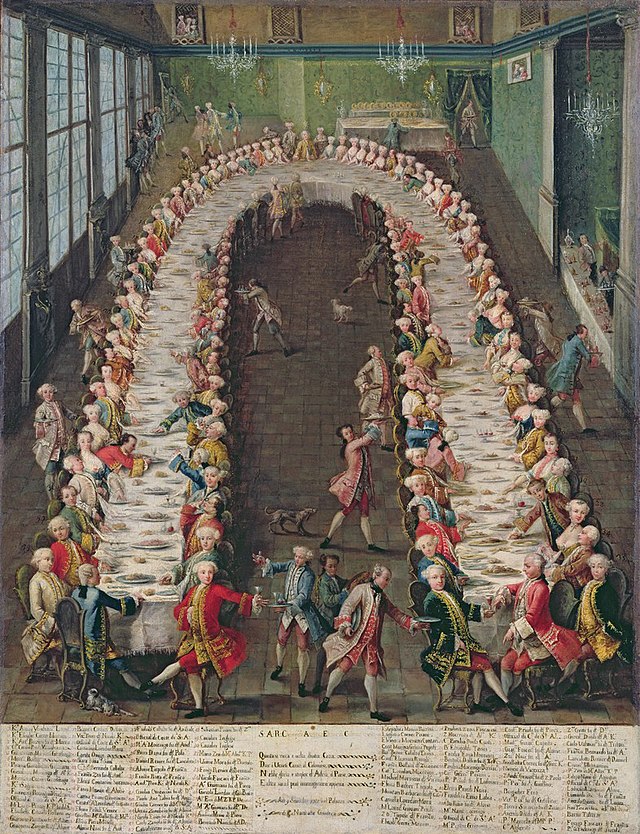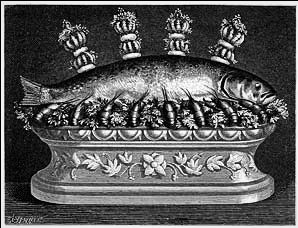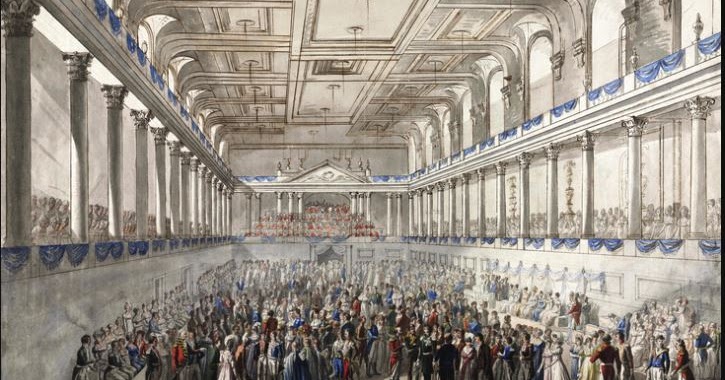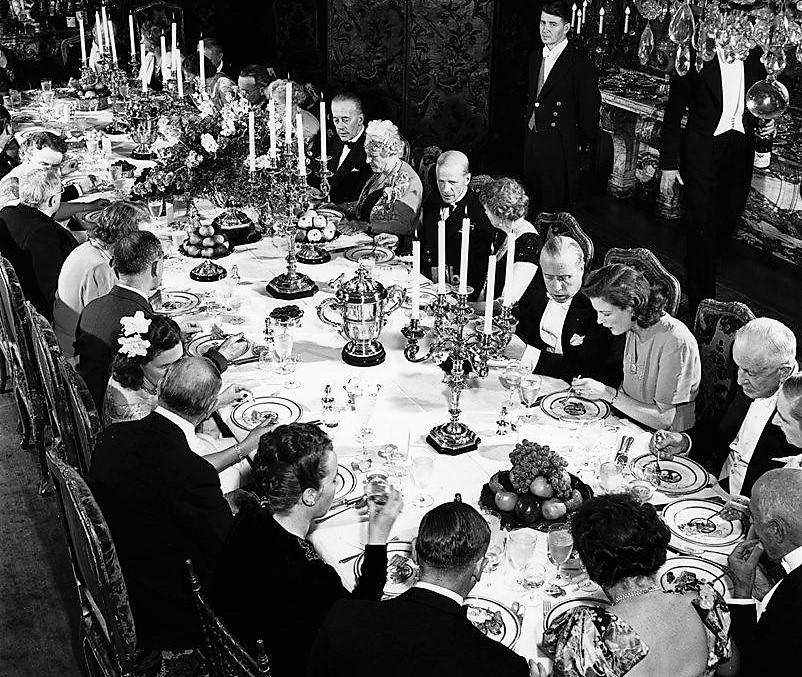French cuisine has been regarded for its unique qualities and flavours since the earliest days of the Ancien Regime, with the written works of celebrated chefs as far back as Guillaume ‘Taillevent’ Tirel, (Le Viandier, 13th century) through to the 17th-century works of chefs such as François Pierre de la Varenne, (Le Cuisinier François, 1651) and François Massialot, (Le Cuisinier Roïal et Bourgeois, 1691). The latter being at a time when we start to see French cuisine really emerge, abandoning middle eastern spices and Italian sauces to define itself with local ingredients, fresh herbs, and new, lighter sauces that incorporate more local, regional, and decidedly more French ingredients, techniques, and flavours.
Paris was the epicenter of culture and the economy and the most highly skilled craftsmen were to be found there, including those of the culinary trades. The very finest were regulated by the guild system, which themselves were regulated by the city government as well as the French crown.
A guild restricted those in any given branch of the culinary industry to operate only within that area and to ‘stay in their lane’ as it were. There were two main groups of guilds: one that supplied the raw ingredients such as butchers, fishmongers, grain merchants, and gardeners; whilst the second group supplied prepared food: bakers, pastry cooks, sauce makers, poulterers, and caterers, etc. There were, however, also guilds that offered both raw materials and prepared food. Two such guilds were the charcutiers and rôtisseurs, who would supply cooked pies and other dishes, whilst also supplying raw meat and poultry; much to the annoyance of the butchers and poulterers.
The guilds served as training grounds and the accredited titles of cook, chef, and master chef were conferred. Those who reached the level of a master chef were of considerable rank and often some degree of fame and were able to enjoy a high level of income.
“Those who have not lived in the eighteenth century, before the Revolution, do not know the sweetness of living”
Talleyrand
Service en Confusion
Writer and food historian Barbara Ketcham Wheaton, in her magnificent tome, ‘Savoring the past: The French Kitchen and Table from 1300 to 1789’, (first published in 1996) notes the following:
In French medieval cuisine, banquets were common among the aristocracy. Multiple courses would be prepared and then served all at once, this was known as ‘service en confusion’.
The sauces were highly seasoned, with thick, heavily flavored mustards used. Pies were the crust more as a container than a part of the dish itself. Ingredients were highly seasonal and preserved items were common, especially in winter. Meats were salted or smoked, whilst spices, salt (and brine) were used to preserve greens, whilst root vegetables were preserved in honey. Pigeon and squab were delicacies and game such as venison, boar, hare, rabbit, and fowl were considered luxuries.
Kitchen gardens provided herbs, many of which are rarely seen and never used today. Vinegar and Verjus were used in preparing sauces as were sugars, (for the very rich) and honey. For the most aristocratic of banquets, presentation was very important and food colours would be extracted from natural ingredients and used to create bright and unusual displays whilst gold and silver leaf would be applied with egg whites.
“One of the grandest showpieces of the time was roast swan or peacock sewn back into its skin with feathers intact, the feet and beak being gilded. Since both birds are stringy and taste unpleasant, the skin and feathers could be kept and filled with the cooked, minced and seasoned flesh of tastier birds, like goose or chicken.”
The most celebrated French chef of the Middle Ages was known as Taillevent, who began his career as a ‘kitchen boy’ in 1326. He rose to the position of chef to the Dauphin, son of John II and when the Dauphin became King Charles the V of France in 1364, Taillevent was his chief chef. Taillevent worked in numerous royal kitchens during the 14th century. His first position was as a kitchen boy in 1326.
He was chef to Philip VI, then the Dauphin who was the son of John II. The Dauphin became King Charles V of France in 1364, with Taillevent as his chief cook. His career spanned sixty-six years, and his tombstone represents him holding a shield with three marmites, (cooking pots) on it.
When Catherine de Medici came to France in the 1540s, many culinary influences from her native Italy became incorporated into French cuisine. During her reign as Queen and then Queen Mother of France (three of her sons became King of France), the dinners she hosted were legendary and helped move French cuisine forward in history. Fine tableware and glassware became important features of dining as did the use of color. The Age of Catherine de Medici, saw the incorporation of new produce into French culinaria, both from the Mediterranean and for the first time the New World.
French food came into its own as a definable and desirable cuisine in the 17th century, in great part because of Louis XIV’s majestic charisma and the glamour and opulence of Versailles. Now the French were eating with forks as utensils and during this “siècle des Lumières” (the Enlightenment) cuisine became a subject of intellectual debate and informed writing within France: ‘food was now being described as an art form and discussed in terms of harmony, chemistry, and spirituality.
La Varenne
François Pierre de la Varenne was a Burgundian and the foremost member of a group of French chefs who codified French cuisine in the age of King Louis XIV. The others were Nicolas Bonnefon, Le Jardinier François, and François Massialot.
The seventeenth century saw a culinary transformation take place in France which carried its gastronomy into the modern era. The heavy use of imported and expensive spices was replaced in favour of natural flavours and locally foraged or farmed ingredients. Middle Eastern spices such as saffron, cinnamon, cumin, ginger, nutmeg, cardamom, etc. were, replaced by local herbs, (parsley, thyme, bay leaf, chervil, sage, tarragon) only pepper survived the cull. New vegetables; cauliflower, asparagus, peas, cucumber, and artichoke were introduced.
Ingredients now had to be fresh and special care was given to extract and preserve the natural flavours of key ingredients instead of masking them. There was also a definitive separation of salted and sweetened dishes, with sweets being served last. This ended the practice, (imported from Italy) of serving sweet and salty dishes all at once and even in the same dish.
La Varenne was not his real name, François Pierre added the aristocratic-sounding suffix as a nom de plume for his writing. He described himself as an écuyer de cuisine for the Marquis d’Uxelles, a Burgundian nobleman of ancient lineage. In this way, Francois associated himself with the great Taillevent and the ennobled chef Guillaime Foquet, who became the Marquis of La Varenne.
His greatest work, written for a professional audience was ‘Le Cuisinier françois’, published in 1651; it is considered by many to be the greatest cookbook of all time. Pirated editions were already in print by 1653, in the same year, it was translated into English as ‘The French Cook’ making it the first French cookbook translated into the English language. It is estimated that over 250,000 copies were printed in some 250 editions and it remained in print for over 160 years. Le Cuisinier François was reprinted in 1983, by Editions Montalba. La Varenne followed his groundbreaking work with a second book, Le Pâtissier François in Paris 1653, which is generally credited with being the first comprehensive French work on pastry-making.
La Varenne it has been said, represents the starting point in truly French cooking, codifying and defining the point at which a medieval style of cooking -ubiquitous all over titled Europe and with its origins in the Greek ‘four humors of health’- was being replaced by a new, lighter, fresher way of cooking that coincided with, and incorporated new ingredients made possible by more efficient and qualitative means of transportation, storage, and handling.
He did not do this in isolation, nor take credit for it, he is immortalized as the first to describe it in detail. He did say that he had found the secret to cooking things delicately and his motto was “Santé, modération, raffinement” (health, moderation, refinement.) He is credited with inventing roux, béchamel sauce, he raised vegetables in importance, as well as herbs. He used few spices in most of his dishes save pepper and if he did use more, it was solely for the purpose of good taste and never to mask primary flavours of the key ingredients.
“In the nineteenth century, when French gastronomes went in search of the ancestors of haute cuisine, they quickly identified La Varenne’s Cuisinier as the seminal work of the canon, a status it retains today.” Susan Pinkard, ‘A Revolution in Taste’ Cambridge University Press. 2009.
The 1789 Revolution upturned the entire social and political foundations of France, many royal chefs lost their jobs, because their employers literally lost their heads! However, this would turn out to be a time when French cuisine ultimately prospered. The guild system collapsed, as part of the old regime and chefs were now free to pursue their own interests, all over Europe and beyond. French culinary influence was on the move and began to spread. French cuisine became more accessible, the food once served in royal courts adapted and available to everyone via hotels, restaurants, inns, and even some homes, thanks to these new cookbooks becoming very popular across the country and throughout the western world.
Grand Cuisine
“When we no longer have good cooking in the world, we will have no literature, nor high and sharp intelligence, nor friendly gatherings, no social harmony.”
Marie-Antoine Careme
Marie Antoine Careme was abandoned as a child during the French revolution, eventually finding work as a kitchen boy in a Parisian chophouse. In 1798, he was formally apprenticed to the famous pâtissier, Sylvain Bailly, in his pastry shop near the fashionable neighbourhood of the Palais-Royal.
Bailly was kind to the young boy and encouraged him to learn to read and write as well as teaching him the arts of the pastry chef. Eventually, his reputation soared and the young Careme opened his own shop, the Pâtisserie de la rue de la Paix, which he kept open until 1813.
The ambitious young Careme made a name for himself by researching the world’s grand monuments, edifices, and buildings in the nearby Bibliothèque Nationale, so that he could then construct large models of them as confections, made with pastry, marzipan, nougat, sugar, and the like. People would come from miles around to see what the young chef pâtissier had created for display in Bailly’s and then his own shop windows.
Soon, Careme was being commissioned to create these monuments in pastry for the private events of the rich, famous, and powerful of Parisian society, including Napoleon. Whilst working on his confections at many private kitchens, he quickly extended his culinary skills to main courses and full menus.
His most ardent supporter and regular patron was the famed French diplomat and gourmand Charles Maurice de Talleyrand-Périgord. With Napoleon’s blessing Careme was taken into the French diplomat Talleyrand’s kitchens where he completed his training.
It is said that Talleyrand set Careme a test: to create a whole year’s worth of menus, without repetition, and using only seasonal produce. Carême passed this test and once he completed his training would go on to cook for George the IV, Tsar Alexander, and banker James Mayer Rothschild amongst others.
Charles-Maurice de Talleyrand-Périgord, 1st Prince of Benevento, then 1st Duke of Talleyrand, was a French politician and diplomat who worked at the highest levels of the French government, usually as foreign minister or in some other powerful diplomatic capacity. His career spanned the regimes of Louis XVI, the French Revolution, Napoleon, Louis XVIII, and Louis-Philippe.
More often than not, those he served distrusted Talleyrand however, they (including Napoleon), found him extremely useful. The name “Talleyrand” has since become a byword for crafty, cynical diplomacy.
“The destiny of nations depends on how they nourish themselves.”
Jean Brillat-Savarin
The Congress of Vienna
The great Congress of Vienna was a gathering of ambassadors of European states held from November 1814 through to June 1815, (though delegates had begun arriving and were already negotiating by late September 1814). The objective was to provide a long-term peace plan for Europe by settling critical issues arising from the French Revolutionary Wars and the Napoleonic Wars. The goal was to restore old boundaries and resize others amongst the main powers so that they could balance each other out and would remain at peace. The settlement at the end of the year-long Congress, (despite some later changes) formed the framework for European international politics for the next 100 years, until the outbreak of the First World War in 1914.
Talleyrand became a famous host during the Congress of Vienna, with Careme as his chef, it is said that by the time the congress disbanded, not only had the map of Europe been irrevocably changed, the culinary tastes of its upper classes had also been thoroughly revised.
Today, Careme is remembered as the chef who finally and fully developed and formalized the concept of haute cuisine; a culinary concept built from the shoulders of previous giants of French cooking who came before him. Here now, was a complete, refined style of food using herbs, fresh vegetables, and simplified sauces with fewer ingredients.
Carême is also credited with creating the standard chef’s hat, (the toque), and with designing new sauces whilst publishing a classification of all sauces into groups based on four ‘mother’ sauces. In his writings, soufflés appear for the first time and he is frequently credited with replacing the practice of serving all dishes at once, with service à la russe (serving each dish in the order printed on the menu). This change is said to have occurred after he returned from the Russian court although it is contested history.
Careme wrote several books on cookery, the encyclopedic L’Art de la Cuisine Française ran for five volumes and included -aside from hundreds of recipes, plans for menus, and opulent table settings- a complete history of French cooking, and instructions for organizing kitchens.
“Carême’s work is a key reason why French cooking has permeated nearly every country across the globe and remains the dominant cuisine in fine dining today.”
Priscilla Ferguson, professor of sociology and cuisinology at Columbia University.
Written by Darren Gall

